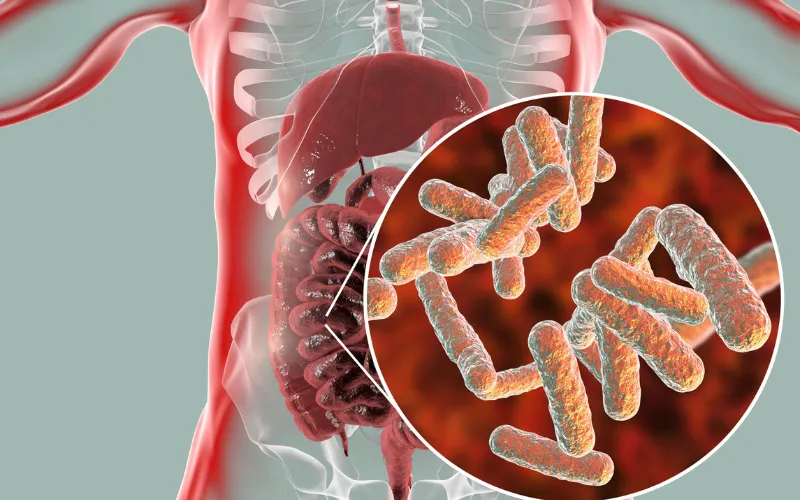
Nutrigenomics examines how your dietary choices affect your genes and bodily functions. Central to this field is the study of microRNA, minute molecules that control gene expression by governing whether a gene is turned on or off, depending on the nutrients being consumed. This work may help clarify how diet affects the development and progression of diseases such as diabetes, obesity, and heart disease. It is better to think of the megatrend of nutrigenomics as one of personalized nutrition.
Key Takeaways
MicroRNAs (miRNAs) regulate gene expression and play a vital role in connecting diet to health outcomes, such as reducing inflammation, managing blood sugar, and influencing chronic conditions like diabetes and heart disease.
Nutrients in food directly influence miRNA activity, with compounds such as omega-3 fatty acids, polyphenols, and curcumin showing positive effects on inflammation control and metabolic health.
Personalized nutrition tailored to individual miRNA profiles offers a more precise approach to managing health compared to generic, one-size-fits-all dietary plans.
Circulating microRNAs act as biomarkers, allowing healthcare practitioners to monitor how diets impact genetic activity and adjust interventions accordingly.
Nutritional deficiencies or unhealthy diets can disrupt miRNA regulation, leading to increased risk of oxidative stress, insulin resistance, and even cancer.
Emerging fields like gut microbiome analysis and miRNA research promise to revolutionize functional medicine, offering deeper insights for personalized wellness strategies.
Table of Contents
Unlocking Gene Expression Through Diet: The Hidden Role of MicroRNAs in Personalized Nutrition
Picture this: your everyday food choices might be tugging on genetic strings you didn’t even know existed. Yep, those kale salads and blueberry smoothies aren’t just “healthy” options—they’re communication devices, whispering instructions to your genes. Enter microRNAs (miRNAs), little molecular mechanism managers that help fine-tune which genes should spring into action and which should sit quietly in the background. But what makes miRNAs stand out in personalized nutrition? Let’s break it down.
How Diet Influences Gene Expression Through MicroRNAs
Traffic light-like, miRNAs manage genetic signals and control gene activity. Nutrients like folate, vitamin A, and polyphenols can influence the behavior of miRNAs, affecting the on/off function of genetic switches. And yet, these effects varied not just by the kind of nourishment that was on the menu but also by the individual and specific circumstances.
For instance, high blood sugar or inflammation appears to cause miRNAs to adjust gene activity related to insulin or swelling. Also, this was a very preliminary study, and nutrigenomics is a remarkably complex field of nutrition science. But I think there’s something here worth mentioning. If our nourishment can indeed influence miRNAs, what effects might this have on the complex of chronic issues we’ve been discussing—obesity, diabetes, liver disease, etc.?
Diet and miRNAs: How Food Translates to Gene Talk
Think of food as a tool that influences miRNA activity in your body. Nutrient-rich foods like berries and green tea boost miRNAs to fight oxidative stress, while omega-3s help combat inflammation and heart risks. However, not all food-based miRNAs survive digestion, and research is ongoing to understand their full impact. Understanding your miRNA profile can help you make smarter, personalized dietary choices.
Blind Spots: Why “One-Size-Fits-All” Nutrition Falls Short
You’ve probably seen cookie-cutter meal plans claiming to be “customized.” The problem? They rarely consider individual miRNA profiles. This is like following Google Maps without turning on location services—it’s generic at best, frustrating at worst. Personalized nutrition driven by miRNA research stands to change this. Understanding which miRNAs are active in your system can tailor your diet to your unique genetic world, instead of relying on outdated food pyramids or one-size-fits-all advice.
From Metabolic Disorders to Cancer: Why miRNA Nutrition Matters
How does this impact your practice? Individuals afflicted with intractable, chronic conditions such as diabetes, metabolic syndrome, or cancer could very well benefit from miRNA-focused treatments.
What if your patients were offered meal plans that intentionally targeted the expression of specific miRNAs? It might sound futuristic, but it’s not. It’s grounded in a science that seems almost magical. Imagine offering a patient struggling with heart disease a precision-targeted meal plan based on available science that activates specific miRNAs tied to cardiovascular health.
MicroRNA-Driven Strategies in Functional Medicine
As a healthcare professional, ignoring the role of miRNAs could mean missing out on transformative solutions. Sure, this isn’t a daily conversation yet, but it’s where preventive medicine is headed. Even basic knowledge about nutrient-to-miRNA interactions can set you apart—whether you’re helping patients manage metabolic conditions, reduce inflammation, or lower condition risks. The more we understand miRNAs, the closer we are to using food as a high-precision assistance tool.
If you’ve ever wondered how to personalize nutrition for your patients truly, this is a space worth digging deeper into.

MicroRNAs: Their Biogenesis, Function, and Unconventional Links to Diet
MicroRNAs (miRNAs) might be tiny, but their impact on gene expression is colossal. Think of them as molecular choreographers, directing how our genes perform based on the nutrients we consume. From their creation to their roles in nutrigenomics, microRNAs hold some exciting secrets—let’s immerse ourselves.
Biogenesis of MicroRNAs
MicroRNAs don’t just magically appear—they go through a fascinating assembly line-like process. It’s a cellular dance involving precise movements and specific players:
Transcription: It all starts in the nucleus, where your DNA is transcribed by RNA polymerase II into a long, messy strand called a primary microRNA (pri-miRNA). Imagine pri-miRNA as raw cookie dough—it’s got potential but isn’t quite ready yet.
Nuclear Processing: Enter DROSHA and DGCR8, enzymes acting like expert sculptors. They slice and dice the pri-miRNA into a more defined precursor microRNA (pre-miRNA), which is smaller but still not finished.
Cytoplasmic Maturation: The pre-miRNA is shipped out of the nucleus to the cytoplasm, where another enzyme, DICER, steps in. DICER trims it down into its final form, a mature microRNA—compact, powerful, and ready to work.
Incorporation into Complexes: The mature microRNA then pairs up with the RNA-induced silencing complex (RISC), a bit like a superhero suiting up. This team either silences messenger RNA (mRNA) or tweaks gene activity.
MicroRNAs can not only silence genes but also activate gene translation and alter chromatin structure (i.e., the complex of DNA and protein that makes up chromosomes), thereby affecting the accessibility of genes to cellular machinery. Thus, microRNAs can accomplish a range of outcomes that influence the biology of the cell.
How does nutrition fit into this picture? Nutrients not only serve as a source of energy but also as essential signaling molecules that influence cellular processes. They can impact the biology of the cell at many different steps, and the processes that they affect have a direct impact on health.
Why MicroRNAs Matter in Nutrigenomics
MicroRNAs help explain why people can have different health outcomes from the same diet. These tiny molecules connect nutrition to gene expression. Foods like berries, green tea, and dark chocolate can alter miRNA levels, affecting how genes are regulated after they are transcribed.
Even identical twins with the same genes can have different risks for conditions like diabetes based on their diets, as miRNAs adjust metabolic and inflammatory processes. For example, high-glycemic diets can influence miRNAs related to insulin resistance, while omega-3-rich foods like salmon and walnuts can regulate miRNAs to reduce inflammation. What you eat has a powerful impact on your genes.
Nutrimiromics Exposed: How Diet Directly Influences MicroRNA Expression and Gene Regulation
If you’ve ever wondered how the food on your plate can tweak your genes, welcome to the world of nutrimiromics. It’s like a backstage pass to watch nutrition and genetics perform a complex dance, with microRNAs (miRNAs) as the choreographers altering gene expression based on what you eat.
Key Mechanisms of Nutrient-Gene Interactions via MicroRNAs
Nutrient-gene interactions are seen in how some nutrients affect microRNAs, which in turn, regulate gene activity. Omega-3s (EPA and DHA) in fish oil reduce microRNA levels associated with inflammation and shift our store of microRNAs toward the healthy end of the spectrum.
We need more studies to know for sure, but so far, the evidence suggests that the kind of fats we eat matters. Saturated fats seem to increase microRNA levels that promote insulin problems, raising our risk of diabetes and heart problems. On the bright side, some nutrients, like resveratrol from red wine and curcumin in turmeric, don’t. They boost healthy microRNAs, which help protect us from cancer.
Nutrient-Specific Impacts on MicroRNAs: A Comprehensive Table
Let us display everything visually, for sometimes the simplest way to grasp the links is to observe them.
Nutrient/Bioactive Compound | Affected MicroRNAs | Impact on Gene Expression | Health Impact |
|---|---|---|---|
Resveratrol | Up: microRNA-663, microRNA-let7A; Down: microRNA-155, microRNA-21 | Inhibits inflammatory/cancer pathways (e.g., NF-kB, AP-1) | Reduced inflammation, lower cancer risk |
Omega-3 Fatty Acids (EPA/DHA) | Down: microRNA-146a, microRNA-21, microRNA-155 | Suppresses pro-inflammatory signals | Improved cardiovascular health, insulin response |
Curcumin | Down: microRNA-155-5p | Lowers TNF-alpha, IL-6, and other inflammatory cytokines | Anti-inflammatory benefits in obesity, autoimmunity |
Vitamin D | Down: microRNA-155, microRNA-146a | Modulates immune-related genes | Prevents fibrosis, reduces atherosclerosis |
Saturated Fats | Up: microRNA-29a, microRNA-27b | Disrupts insulin signaling | Increased diabetes and arrhythmia risk |

Evidence from Studies: Dietary Modulation of MicroRNAs and Its Unconventional Implications
Key Findings from Systematic and Scoping Reviews
Plant-based diets help regulate microRNAs like microRNA-34 and let-7, which manage glucose and lipid metabolism. Nutrient-rich diets also increase microRNA-103/107, improving fat storage and blood sugar control. However, nutrient deficiencies, such as low selenium, reduce microRNA-185, leading to higher oxidative stress and an increased risk of chronic diseases.
Emerging research reveals that ketogenic diets can alter brain-related microRNAs, enhancing cognitive function and redefining mental health nutrition. While much of the evidence comes from animal and lab studies, human research shows plant-based diets promote positive epigenetic modifications, especially in already healthy individuals.
Tying Research to Chronic Diseases
MicroRNAs play a key role in preventing chronic diseases. Dietary polyphenols, found in foods like berries and green tea, help regulate microRNAs to fight cancer by stopping tumor growth. Similarly, omega-3 fatty acids, found in fish and flaxseed, improve insulin sensitivity by influencing specific microRNAs, reducing the risk of diabetes. Small dietary changes, like opting for an omega-3-rich breakfast, can have lasting effects by altering gene expression, making these foods powerful tools for better health.
Health and Disease Implications: Integrating MicroRNA Insights into Functional Medicine Practice
Exploring the role of microRNA (miRNA) in functional medicine can feel like uncovering a secret recipe to better health. These tiny messengers, influenced by what you eat, hold the power to tweak gene expression and reshape the way your body functions. Let’s jump into how miRNAs are making waves in managing metabolic issues and beyond.
Applications in Metabolic Health and Beyond
Grasping the concept of miRNAs is equivalent to possessing a master key that can unlock the riddles of metabolic disorders, inflammation, and even cancer. Here is the essential information you need to understand them:
miRNA regulation is vital for addressing metabolic disorders. For instance, microRNA-103 and microRNA-107 help control glucose and lipid levels, influencing diabetes and heart health. Personalized diets based on miRNA profiles could stabilize blood sugar and cholesterol effectively.
Nutrients like vitamin D help manage inflammation by suppressing miRNA-155, reducing the risks of fibrosis in chronic kidney disease and atherosclerosis, and promoting smoother body functions.
Cancer prevention moves to preemptive tactics. Foods rich in polyphenols, such as green tea and berries, regulate miRNAs to arrest the growth of cancer cells, particularly those related to risks from deficiency in zinc. With polyphenols and other phytochemicals, functional medicine may employ a diet strategy to target the miRNA-related vulnerabilities of its patients.
miRNAs serve as biomarkers to monitor dietary effects, such as using microRNA-155 for vitamin D guidance in autoimmune cases or omega-3s for reducing inflammation. Integrating miRNA data with gut microbiome research enables personalized care, like combining anti-inflammatory nutrients and probiotics. This approach supports tailored nutrition based on genetics for improved and lasting health.

Challenges, Future Directions, and Practical Tips for Practitioners
MicroRNA regulation in nutrigenomics may feel like trying to solve a jigsaw puzzle without all the pieces. While the potential is sky-high, certain hurdles make it tricky to carry out in everyday healthcare practice. Let’s look at the gaps, where the science is heading, and how you can start applying this exciting field in your work.
Overcoming Gaps and Looking Ahead
Most of what we know about microRNAs (miRNAs) and their interactions with our diets comes from animal models and laboratory studies, not from humans. The truth is, what works on a mouse may not work in human biology. This gap in research focused on humans means you must be very careful when applying the findings to patient care.
Looking ahead, the integration of miRNA studies with microbiome analysis could be a total game-changer. Imagine combining gene-nutrient interactions with gut health data for a complete profile of your patient’s health—practically a blueprint for personalized wellness.
Actionable Tips for Practitioners Using miRNA Data
Start with genetic testing. Identifying specific single-nucleotide polymorphisms (SNPs) in miRNA genes gives you a roadmap. It’s like getting the directions before starting a road trip—you’ll know where to focus efforts and avoid trial-and-error frustration.
Recommend miRNA-modulating foods. Think of them as edible tools in your nutrition toolbox. Foods rich in resveratrol, like grapes or berries, and curcumin, found in turmeric, are superheroes for inflammation control. Incorporate these often to empower your patients’ meal plans.
Track progress with lab tests—circulating miRNAs in the blood act like health status updates in real time. Suggest routine testing for these biomarkers to monitor interventions and tweak diets whenever needed.
Personalize your recommendations. Skip the cookie-cutter diet plans. Instead, use miRNA data to craft nutrition strategies tailored to chronic condition prevention. For example, a patient managing insulin resistance may benefit from unique tweaks in key nutrients, helping where generic advice might fall flat.
Combining these steps with curiosity and a patient-centric approach can transform how you practice. Nutrigenomics might feel a bit like diving into uncharted waters, but these tips are your life raft.
Revolutionizing Patient Care: Final Thoughts on MicroRNA Regulation in Nutrigenomics
The convergence of microRNA science and nutrigenomics is rewriting the rules of nutrition and disease prevention. This isn’t just another dietary trend — it’s a paradigm shift toward precision health, where your genes, your diet, and your outcomes align.
Tailoring nutrition to your unique miRNA profile transforms food into a functional tool, influencing inflammation, metabolism, immunity, and even gene expression. It empowers practitioners to move beyond guesswork and deliver truly personalized, data-driven care.
As research continues to evolve, one truth is already clear: your diet holds genetic influence. The future of health optimization lies in decoding that relationship, and microRNAs are the missing link. This is more than personalization — it’s prevention, performance, and potential built into every bite.
Frequently Asked Questions
What are microRNAs (miRNAs), and what is their function in the human body?
MicroRNAs (miRNAs) are short, non-coding RNA molecules that regulate gene expression by switching genes on or off post-transcriptionally. They influence metabolic pathways, immune function, and inflammation — making them key regulators in personalized nutrition and chronic disease prevention.
How does food influence microRNA expression?
Dietary nutrients directly affect miRNA activity. Foods rich in omega-3 fatty acids, polyphenols (like resveratrol), and vitamins modulate the expression of miRNAs involved in inflammation, metabolism, and cellular repair. Conversely, processed or high-saturated-fat foods may activate harmful miRNAs that increase disease risk.
Can diet-regulated miRNAs help prevent or manage chronic diseases?
Yes. Modulating specific miRNAs through diet can reduce the risk of type 2 diabetes, cardiovascular disease, obesity, and even cancer. Personalized nutritional strategies based on miRNA profiles are emerging as precision tools in functional and integrative medicine.
Which foods support healthy microRNA regulation?
Anti-inflammatory and antioxidant-rich foods like fatty fish, berries, turmeric (curcumin), leafy greens, nuts, seeds, and cruciferous vegetables help regulate beneficial miRNAs. These nutrients influence genes linked to metabolism, inflammation, and immune response.
How are microRNAs used in personalized or precision nutrition?
Healthcare providers can analyze an individual’s miRNA expression through genetic or blood testing. This data enables the development of personalized dietary protocols aimed at enhancing beneficial gene activity and suppressing harmful gene expression.
Do food-derived miRNAs survive digestion and affect human genes?
Some exogenous (plant or animal-based) miRNAs have been shown to survive digestion and enter circulation. However, their bioavailability varies. Whole-food diets with consistent nutrient density are more reliable for supporting endogenous miRNA modulation.
How do microRNAs influence inflammation and immune response?
Certain miRNAs, such as miR-155 and miR-146a, control genes involved in inflammatory signaling. Nutrients like vitamin D, omega-3s, and polyphenols can downregulate these miRNAs, reducing systemic inflammation and supporting immune regulation.
What role do microRNAs play in cancer prevention?
MiRNAs regulate gene pathways related to cell proliferation and apoptosis. Dietary bioactives like sulforaphane (broccoli), resveratrol (red grapes), and EGCG (green tea) can influence tumor-suppressing miRNAs, making diet a valuable adjunct in cancer risk reduction.
Is microRNA testing available for use in clinical nutrition or functional medicine?
Yes, emerging diagnostic platforms now offer miRNA blood panel testing. Though still in early adoption, these tests allow practitioners to personalize diet and supplement protocols based on miRNA expression related to inflammation, metabolism, and disease markers.
How does the gut microbiome interact with microRNA activity?
The gut microbiota influences host miRNA expression and vice versa. Dietary choices that support gut health — such as high-fiber, polyphenol-rich, and fermented foods — can improve both microbial diversity and miRNA regulation, enhancing overall health outcomes.
What are actionable steps for integrating miRNA science into nutritional care?
Conduct DNA or circulating miRNA testing for baseline profiling.
Prioritize anti-inflammatory, nutrient-dense foods known to modulate key miRNAs.
Monitor biomarker changes with periodic testing.
Adjust protocols based on miRNA shifts, disease risk, or patient-specific goals.
References
Feng, J., Xing, W., & Xie, L. (2016). Regulatory Roles of MicroRNAs in Diabetes. International Journal of Molecular Sciences, 17. https://doi.org/10.3390/ijms17101729.
Chen, G., Lian, W., Wang, G., Wang, S., Yang, Y., & Zhao, Z. (2012). Altered microRNA expression in skeletal muscle results from high-fat diet-induced insulin resistance in mice.. Molecular medicine reports, 5 5, 1362-8 . https://doi.org/10.3892/mmr.2012.824.
Chen, H., Lan, H., Roukos, D., & Cho, W. (2014). Application of microRNAs in diabetes mellitus.. The Journal of endocrinology, 222 1, R1-R10 . https://doi.org/10.1530/JOE-13-0544.

